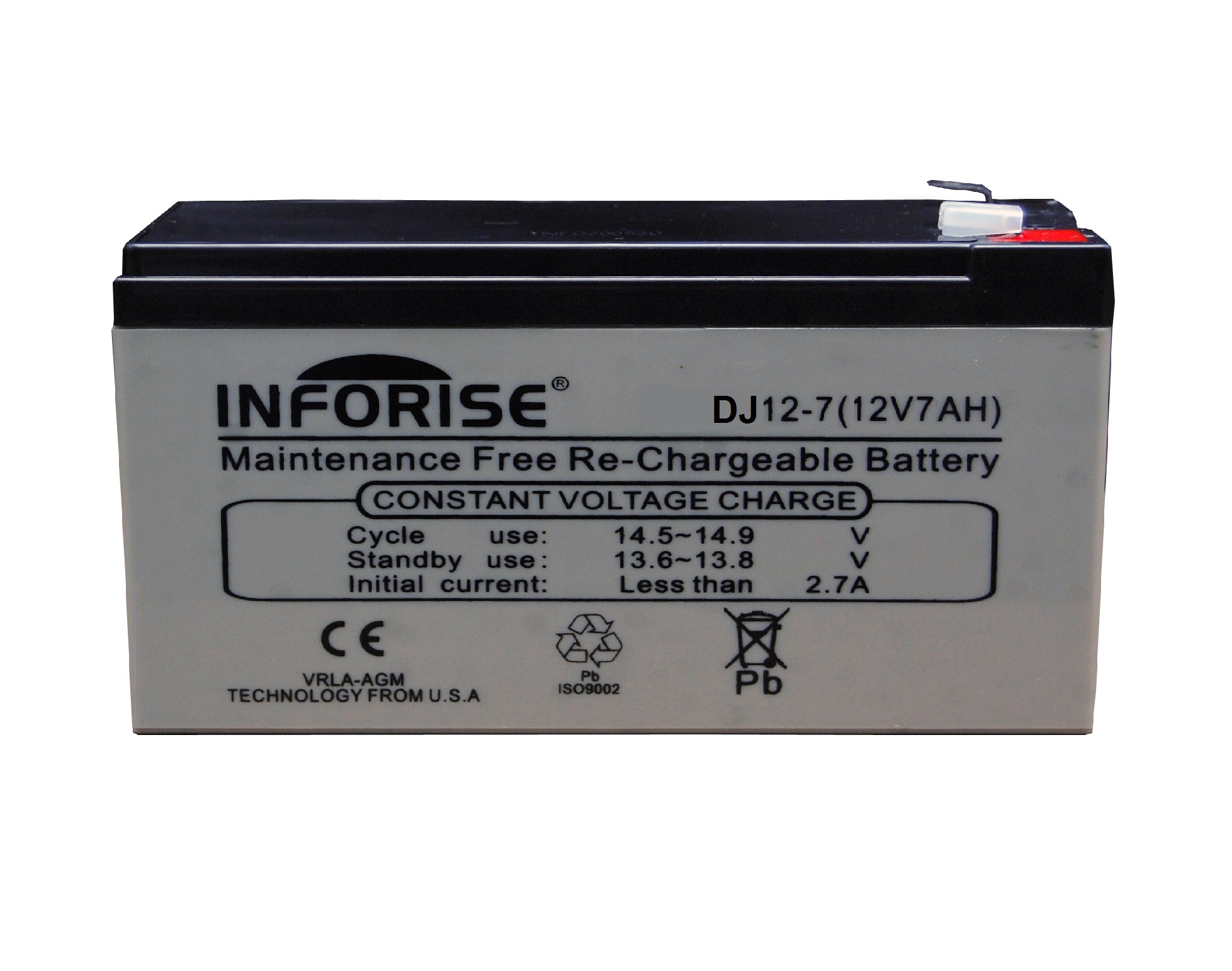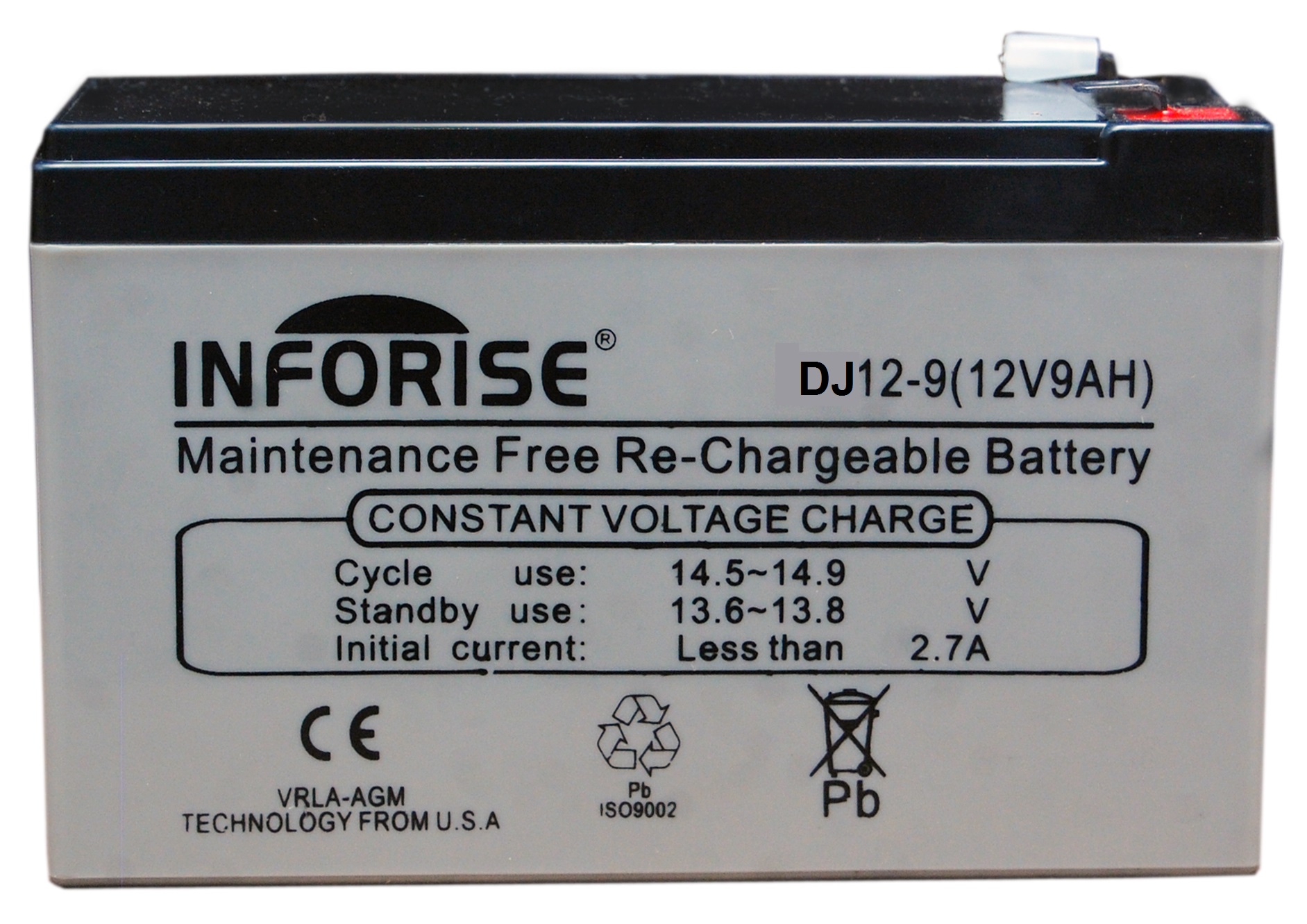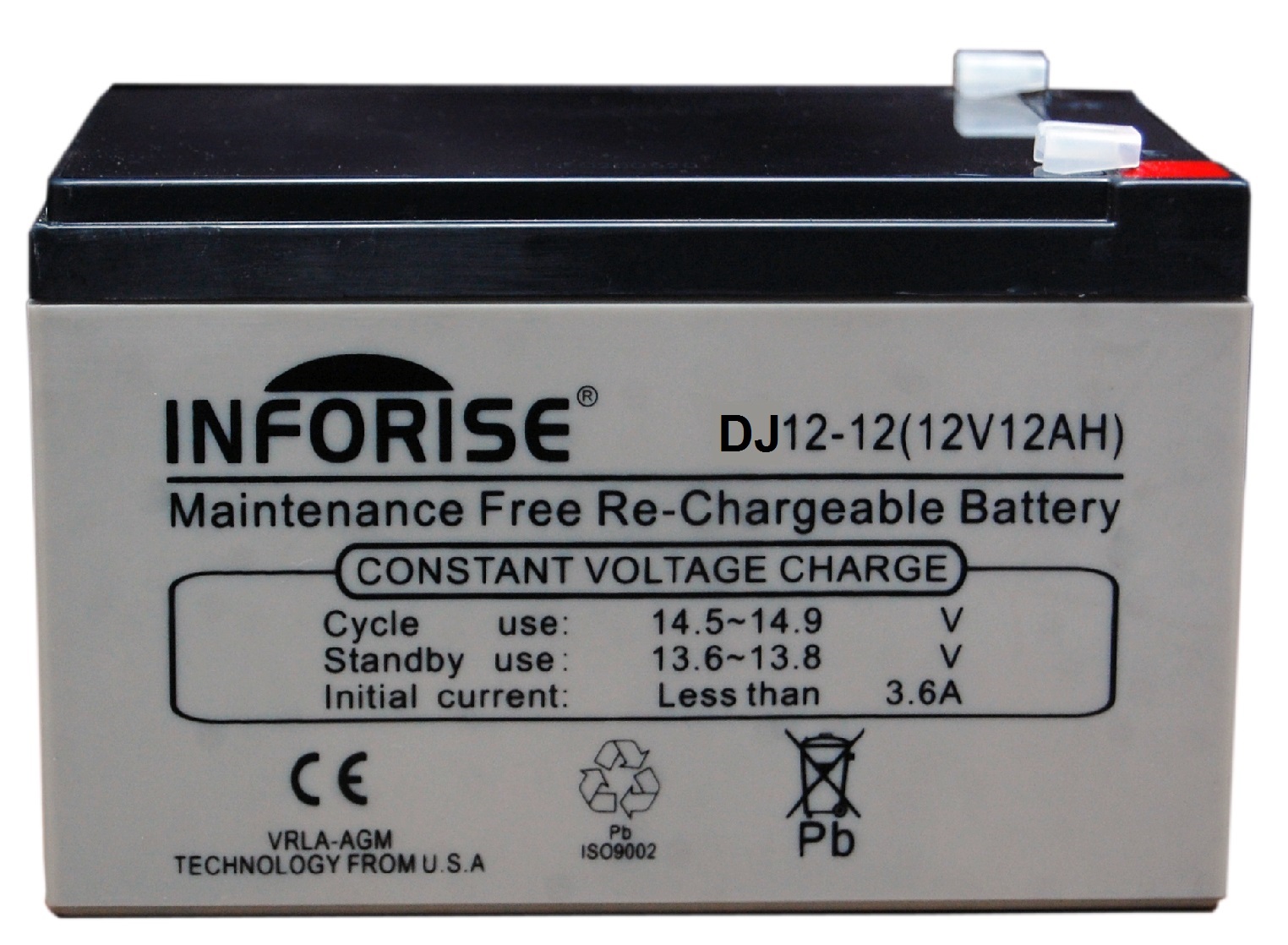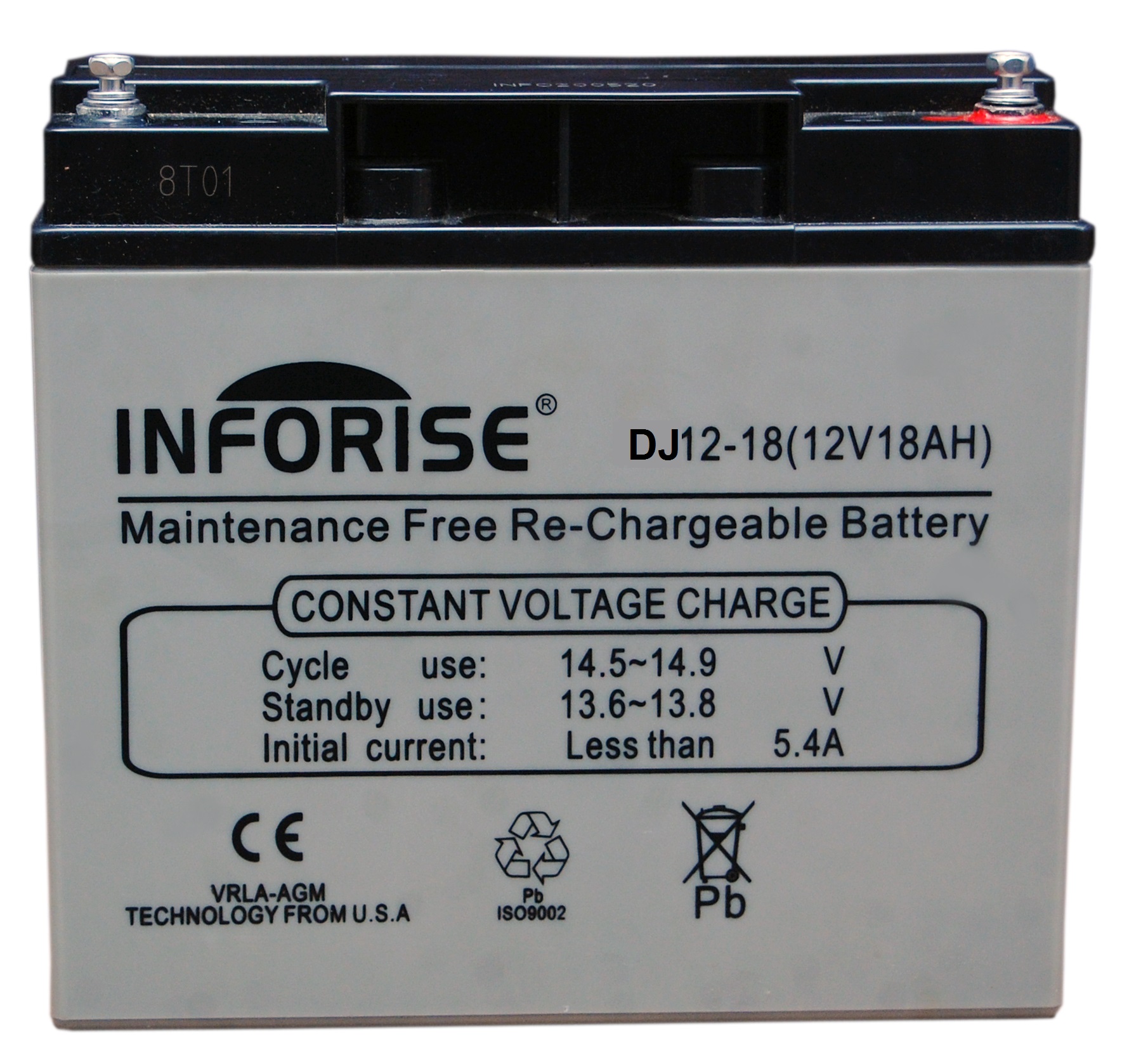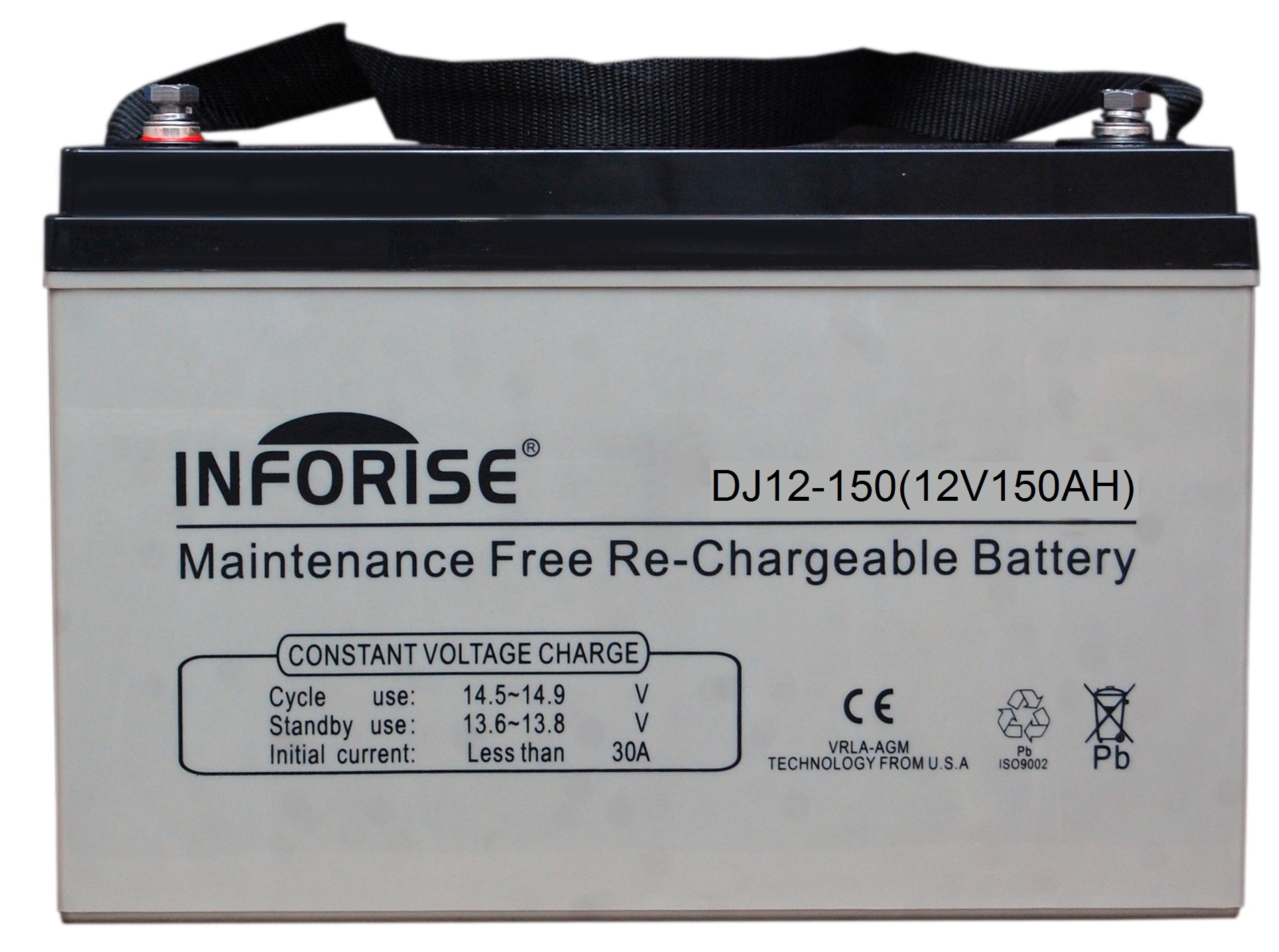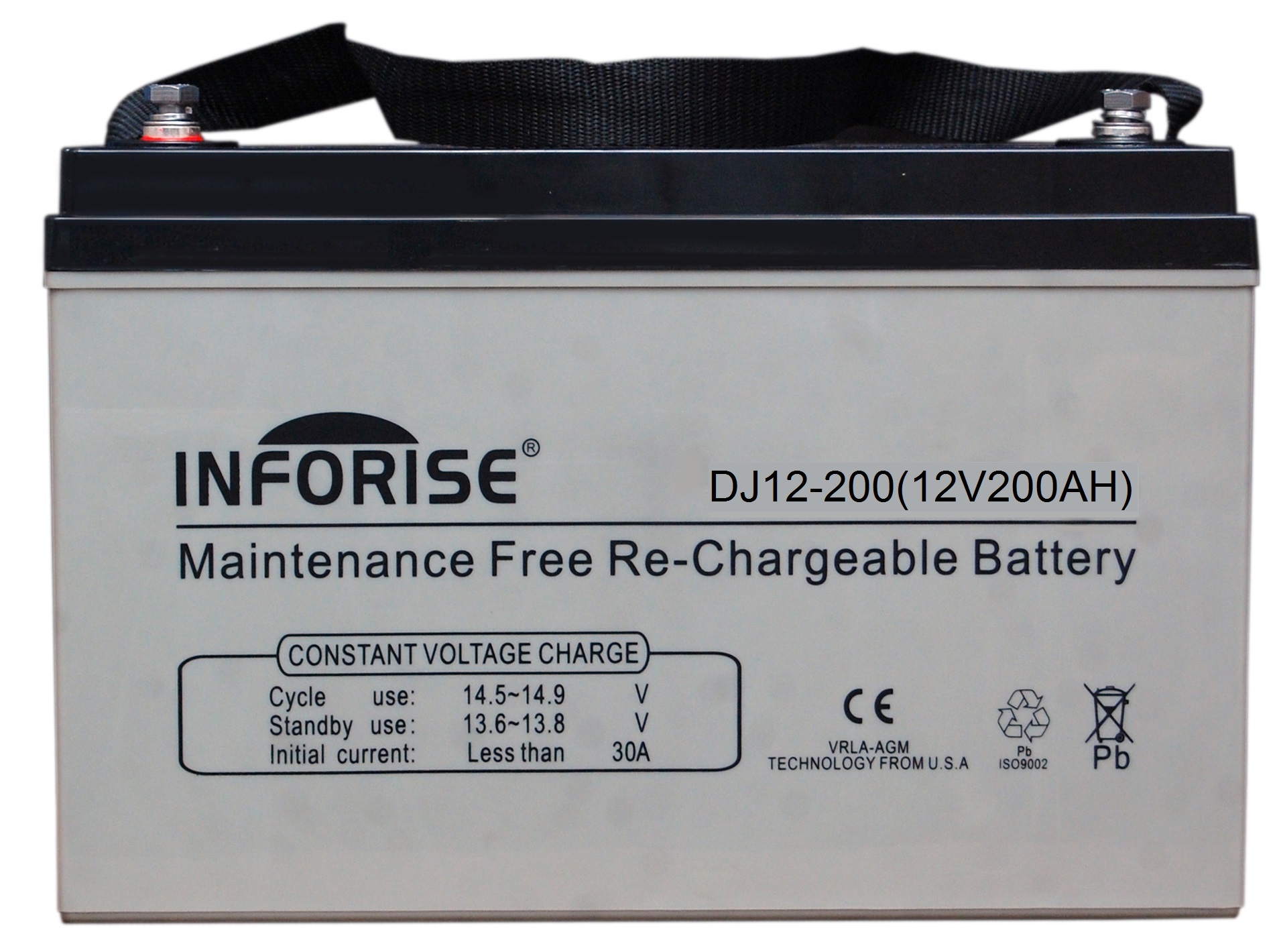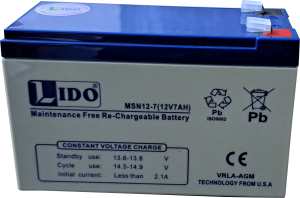✅ Common Applications:
- UPS (Uninterruptible Power Supply) systems
- Emergency lighting
- Security systems and alarms
- Medical devices
- Electric scooters and wheelchairs
Features of an SLA Battery
- Maintenance-Free Operation
No need to add water or check electrolyte levels; completely sealed for hassle-free use. - Spill-Proof Design
Can operate in various orientations without leaking, making it safe and portable. - Rechargeable
Supports hundreds of charge-discharge cycles with proper usage and care. - Durable Construction
Built to withstand vibrations, shocks, and harsh conditions—ideal for standby and deep-cycle applications. - Low Self-Discharge Rate
Holds charge well over time when not in use, making it great for backup applications. - Consistent Voltage Output
Provides stable power supply during the discharge cycle. - Cost-Effective
More affordable compared to lithium-ion batteries, especially in high-capacity setups. - Safe Operation
Equipped with safety valves and designed to minimize gas release during charging. - Wide Application Range
Commonly used in UPS systems, emergency lighting, alarms, medical equipment, and mobility devices. - Available in Various Sizes
Offers a range of capacities and configurations to suit residential, commercial, and industrial needs.
✅ Key Benefits of Maintenance-Free SLA Batteries:
- No Water Refilling Needed
The battery is sealed, so there’s no need to top up with distilled water during its lifespan. - No Acid Leaks or Spills
The sealed construction prevents acid leakage, even if the battery is tipped or placed at an angle. - Safer Handling
Because there’s no exposed acid, it’s safer for users in homes, offices, and sensitive environments. - Lower Operational Costs
Reduces labor and time involved in battery maintenance, especially in large-scale installations. - Ideal for Backup & Unattended Systems
Perfect for UPS, alarms, and solar setups where regular maintenance isn’t practical.
Why SLA Batteries Are More Cost-Effective Than Li-ion:
- Lower Initial Purchase Cost
SLA batteries are usually 2 to 3 times cheaper upfront than comparable Li-ion batteries. - Proven, Mature Technology
The manufacturing process is well-established, which keeps production and market prices lower. - Widespread Availability
Easier to source globally due to extensive use in various industries (UPS, alarms, telecom, etc.). - Affordable for Bulk Usage
Ideal for projects or systems where cost per unit is a major factor — like in solar power banks or UPS rooms. - No Need for Complex Battery Management Systems (BMS)
While Li-ion batteries require sophisticated BMS for safety, SLA batteries are simpler to install and operate.
⚖️ However, Keep in Mind:
- SLA batteries have a shorter lifespan (2–5 years) compared to Li-ion (up to 10+ years).
- They are heavier and bulkier, and offer lower energy density.
If you’re looking for budget-friendly, reliable backup power, SLA is a smart choice.
SLA Battery – Long Service Life
Sealed Lead Acid (SLA) batteries are well-regarded for their reliable and durable performance over time. While they may not match lithium batteries in overall lifespan, SLA batteries still offer long service life when properly maintained and used under recommended conditions.
🕒 Key Points About SLA Battery Service Life:
- Typical Lifespan: 3 to 5 Years
Under normal use and controlled temperatures, SLA batteries can last several years. - Deep Cycle SLA Batteries
Specially designed deep cycle models offer longer life and more charge/discharge cycles compared to standard SLA types. - Low Self-Discharge Rate
SLA batteries retain charge well when idle, reducing wear and extending life in standby applications like UPS or alarms. - Rugged and Durable
With proper charging and no over-discharge, SLA batteries can handle hundreds of cycles without performance loss. - Temperature-Resistant
Designed to work in a wide range of environments, contributing to a stable and extended operational life.
➡️ Pro Tip: Keep SLA batteries in cool, dry places and recharge them regularly (even during storage) to maximize their lifespan.
🔋 SLA Battery – Built Tough for Demanding Applications
Sealed Lead Acid (SLA) batteries are known for their rugged construction and reliable durability, making them ideal for a wide range of environments — from home backup systems to industrial setups.
🛠️ Key Reasons Why SLA Batteries Are “Built Tough”
- Sealed, Leak-Proof Design
No acid spills or corrosion — even if the battery is tilted or handled roughly. - Strong Outer Casing
Constructed with impact-resistant ABS plastic, offering protection against shocks, vibrations, and environmental wear. - Resistant to Harsh Conditions
Performs well in extreme temperatures and high-humidity areas — perfect for outdoor or factory use. - Low Risk of Thermal Runaway
Unlike some battery types, SLA batteries are inherently stable, reducing fire and explosion risks. - Reliable in High-Drain Applications
Provides steady performance in critical systems like UPS, emergency lighting, security systems, and telecom.
Why It’s Important to Know About SLA Batteries
Understanding Sealed Lead Acid (SLA) batteries is crucial because they are a widely used, cost-effective, and dependable energy storage solution — especially in systems where reliability is non-negotiable.
🧠 Top Reasons to Know About SLA Batteries:
- 🔌 Everyday Applications
SLA batteries power UPS systems, emergency lighting, alarms, telecom equipment, and medical devices — knowing how they work helps ensure reliability in critical moments. - 💸 Cost-Efficient Power Backup
They’re affordable compared to lithium-ion alternatives, especially for bulk or short-term backup needs. - 🛠️ Maintenance-Free Operation
Modern SLA batteries are sealed and require no topping off with water — ideal for users who want a “set-it-and-forget-it” solution. - ⚠️ Safety & Usage Knowledge Prevents Damage
Over-discharging, improper charging, or exposure to heat can shorten battery life. Basic know-how can extend lifespan and protect your investment. - 🏭 Industry Standard Across Sectors
Used in industries like security, telecom, solar energy, healthcare, and transport, making it a battery type worth understanding for business or personal use.

